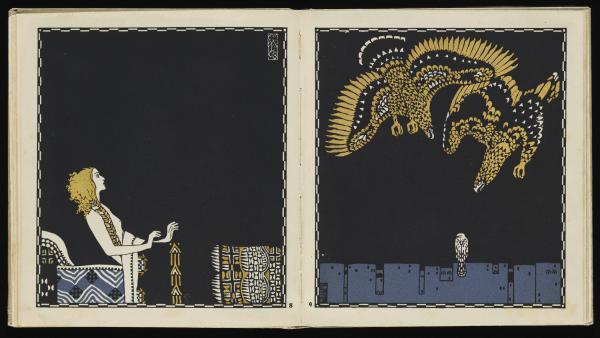In his 1891 book Malerei und Zeichnung (Painting and Drawing), the German artist Max Klinger describes the difference between painting and the graphic arts as not only a formal distinction between color and line, but also a contrast between reality and fantasy. Painting, Klinger believed, should depict nature, beauty, and “the world as it should be.” Zeichnung, which encompasses both drawing and printmaking, should be used to represent subjective states, fantasy, and “the world as it should not be.” Zeichnung offers the artist great creative freedom, but Klinger also believed it could reveal truths hidden beneath the surface of everyday life.
LACMA's latest exhibition, Fantasies and Fairy Tales, explores the role of fantasy and the recurrence of popular fairy tales, myths, and legends in graphic works made around 1900, including select earlier examples and several more recent works. Artists pushed the limits of their own imaginations for different purposes. Fantasy was used to examine emotional and mental states, to visualize spiritual transcendence, and as a springboard for aesthetic experimentation and abstraction. Fairy tales, a public and shared form of fantasy, offered familiar narratives and characters that artists could use to communicate messages about individual fears and desires or collective hopes and dreams. Some works in this exhibition evoke a sense of terror and dread. Others offer a romantic vision of an invented or idealized past, or focus on the whimsy and enchantment of the world around us. In all these works, artists present a particular way of seeing that goes beyond naturalistic representation.
Visit Fantasies and Fairy Tales in the Ahmanson Building, Level 2, through February 3, 2019.



